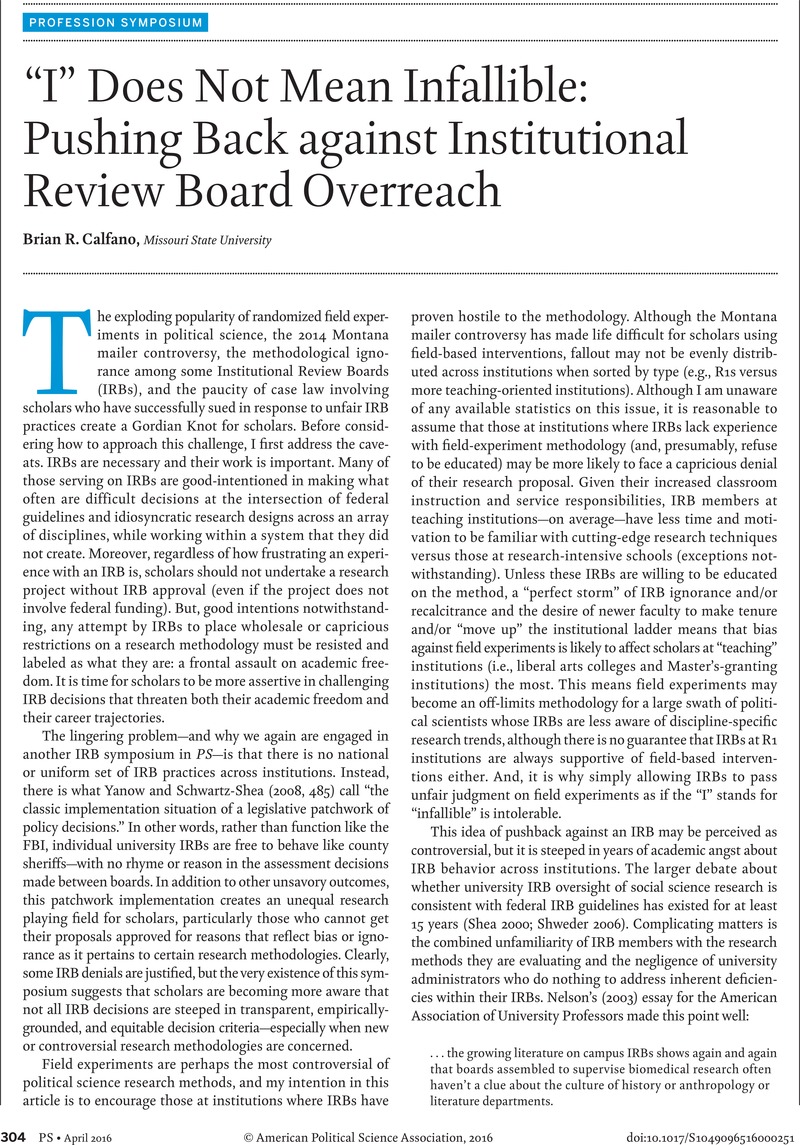No CrossRef data available.
Article contents
“I” Does Not Mean Infallible: Pushing Back against Institutional Review Board Overreach
Published online by Cambridge University Press: 20 April 2016
Abstract
An abstract is not available for this content so a preview has been provided. Please use the Get access link above for information on how to access this content.

- Type
- Profession Symposium: Local Control and Realities in the Relationship between Institutional Review Boards and Political Science Research
- Information
- Copyright
- Copyright © American Political Science Association 2016
References
REFERENCES
Mayer, Kenneth. 2016. “Working through the Unworkable: A View from Inside the IRB Process.”
PS: Political Science & Politics
49 (2): this issue.Google Scholar
Musoba, Glenda D., Jacob, Stacy A., and Robinson, Leslie J.. 2014. “The Institutional Review Board (IRB) and Faculty: Does the IRB Challenge Professionalism in the Social Sciences?”
The Qualitative Report
19: 1–14.Google Scholar
Nelson, Cary. 2003. “Can E. T. Phone Home? The Brave New World of University Surveillance?”
Academe (September/October): 30–5.Google Scholar
Rasmussen, Amy. 2011. “Professor Sues U. over Research Protocol.”
The Brown Daily Herald, March 22. Accessed online June 30, 2015.Google Scholar
Shea, Christopher. 2000. “Don’t Talk to the Humans: The Crackdown on Social Science Research.”
Lingua Franca
10 (6): 26–34.Google Scholar
Shweder, Richard A. 2006. “Protecting Human Subjects and Preserving Academic Freedom: Prospects at the University of Chicago.”
American Ethnologist
33 (4): 507–18.Google Scholar
Yanow, Dvora, and Schwartz-Shea, Peregrine. 2008. “Reforming Institutional Review Board Policy: Issues in Implementation and Field Research.”
PS: Political Science & Politics
41 (3): 483–94.Google Scholar




